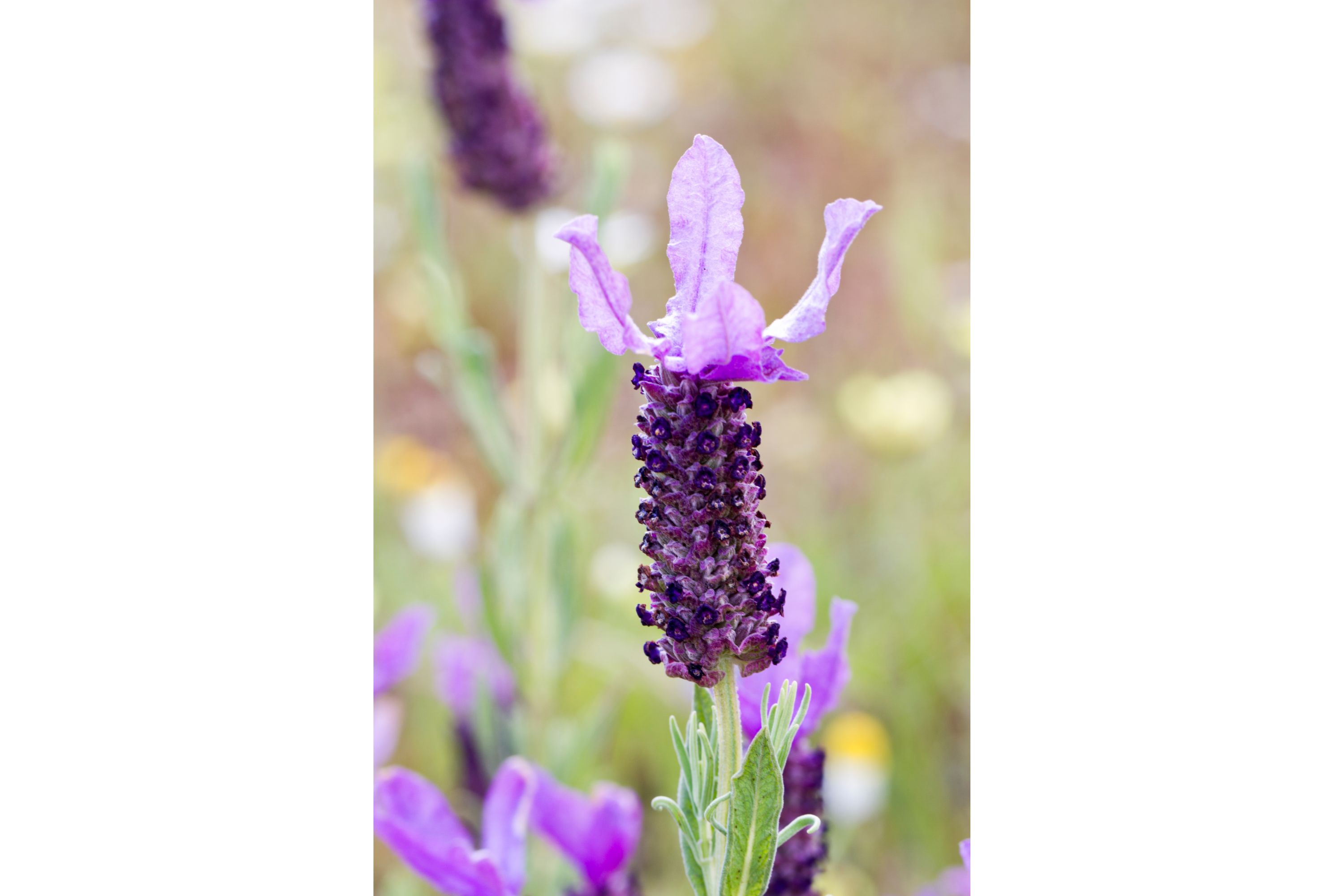Spanish lavender
(Lavandula stoechas)

Description
Lavandula stoechas, also known as Spanish lavender, is a flowering plant species in the Lamiaceae family. This plant is native to the Mediterranean region, and it has been used for centuries for its medicinal and aromatic properties. In this article, we will delve deeper into the characteristics, uses, cultivation, and care of Lavandula stoechas. Taxonomy and Etymology: Lavandula stoechas belongs to the genus Lavandula, which is composed of approximately 47 species of flowering plants in the mint family Lamiaceae. The genus is native to the Old World and is widely distributed across Africa, Europe, and Asia. The specific epithet stoechas comes from the Greek word stoechados, which means "spike," referring to the flower spikes that are characteristic of the species. Characteristics: Lavandula stoechas is a shrubby plant that grows to a height of about 60 cm (24 inches). Its leaves are linear, grayish-green in color, and can grow up to 4 cm (1.6 inches) long. The flowers are arranged in dense, cone-shaped spikes that can reach up to 8 cm (3.1 inches) in length. The flowers are typically a deep purple color, although some cultivars may have pink or white flowers. The plant blooms from late spring to mid-summer, and it is a popular ornamental plant due to its attractive flowers and pleasant fragrance. Uses: Lavandula stoechas has a long history of use in traditional medicine. The plant was used by ancient Greeks and Romans to treat various ailments, such as headaches, digestive disorders, and respiratory problems. The essential oil extracted from the flowers and leaves of Lavandula stoechas is believed to have antiseptic, anti-inflammatory, and sedative properties. In modern times, Lavandula stoechas is primarily used for its ornamental and aromatic properties. The plant is commonly grown in gardens, and its flowers are used in the production of perfumes, soaps, and essential oils. Cultivation: Lavandula stoechas is a hardy plant that is easy to grow and maintain. The plant prefers full sun and well-draining soil, and it is drought-tolerant once established. It can be propagated by seeds, cuttings, or division. When starting from seed, it is recommended to sow them indoors in the late winter or early spring, and transplant them outdoors once the danger of frost has passed. Cuttings can be taken from the plant in the spring or fall, and division can be done in the spring. Lavandula stoechas can be grown in containers, but it is important to use a well-draining soil mix and to ensure that the pot has drainage holes. When grown in containers, the plant will require more frequent watering than when grown in the ground. Care: Lavandula stoechas is a low-maintenance plant that requires minimal care. It should be watered deeply but infrequently, allowing the soil to dry out between watering sessions. Overwatering can lead to root rot and other diseases. The plant benefits from a light pruning after the flowering season to promote bushier growth and to prevent the plant from becoming too leggy. In colder climates, it is recommended to mulch around the base of the plant in the fall to protect it from freezing temperatures. Pests and Diseases: Lavandula stoechas is generally resistant to pests and diseases, but it may be susceptible to fungal diseases such as root rot and leaf spot. It is important to ensure that the plant has adequate drainage to prevent these diseases from occurring.
Taxonomic tree:







